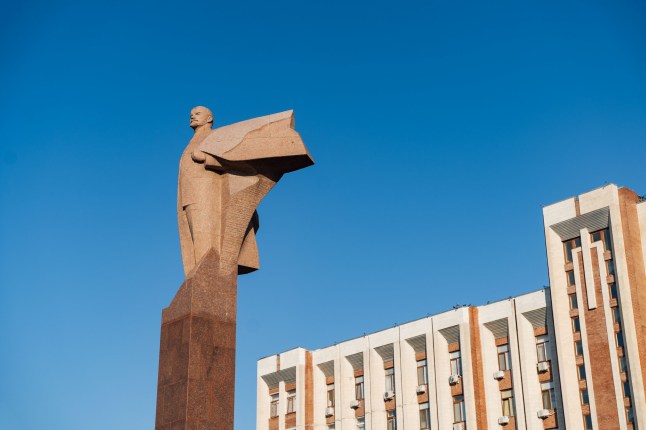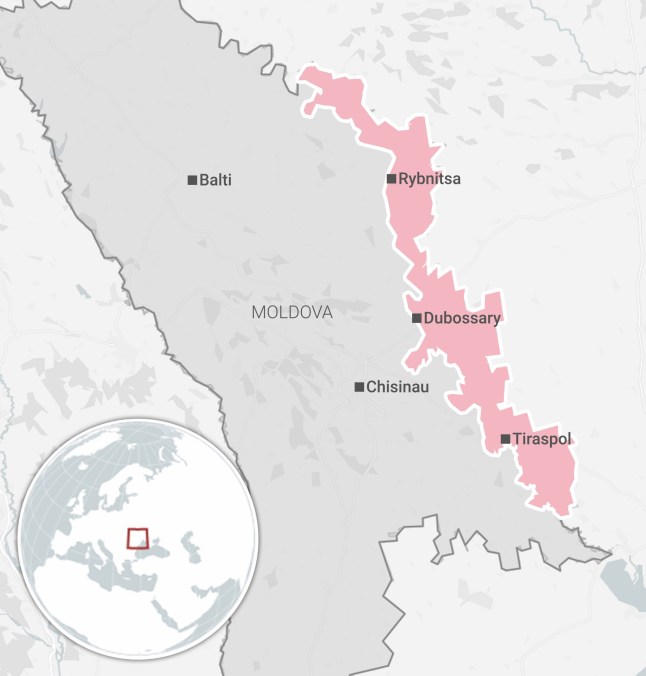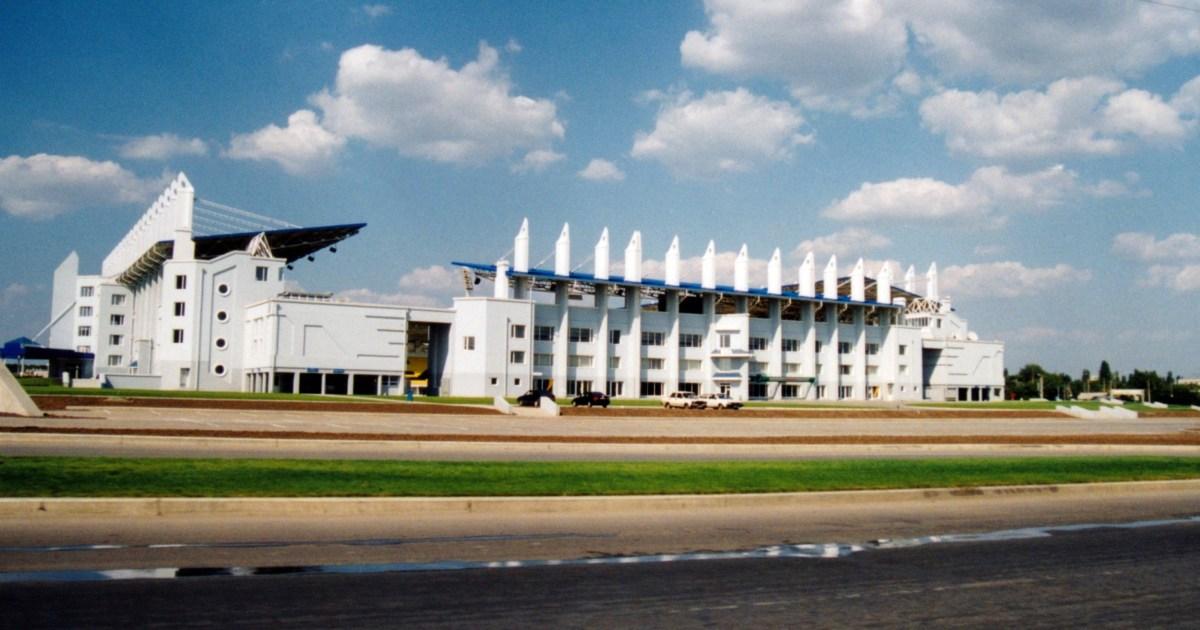
A statue of the communist leader Lenin in front of the Presidential Palace in Tiraspol, one of the most important political buildings in Transnistria (Picture: ZUMA Press Wire/Shutterstock)
Kieran Brown is fascinated by places that don’t exist. Not officially, at least.
The British content creator recently spent a day in Transnistria, a breakaway republic of Moldova that is of Europe’s most unusual destinations: a self-declared nation that the world doesn’t recognise.
Touted as a ‘surreal relic of Soviet times’, this tiny enclave – known locally as Pridnestrovie – is a magnet for intrepid travellers.
It’s got Lenin statues and ramshackle restaurants run by babushkas. It’s got a ghostly railway station, a dark military history and streets that look like a time-warp to the past. In other words, it’s fascinating.
‘There’s not a ton to do, it’s more about soaking up the weirdness of it all,’ Kieran, 29, tells Metro. ‘Hammer and sickle flags are still flying, and the ATMs don’t accept Visa or Mastercard.’
Best remember to bring cash, then. The local currency is the Transnistrian ruble, valued against the Euro at 20 to 1. It’s the only accepted currency used in day-to-day life there.
Sign up to The Getaway newsletter
Fuel your wanderlust with our curated newsletter of travel deals, guides and inspiration. Sign up here.
Sandwiched between the Ukrainian border and the Dniester River, Transnistria broke away from Moldova in a short civil war in the early 1990s. Backed by Russia, it became a de facto independent republic, with its own government, parliament, military, police, currency, postal system and vehicle registration.
The separatist region has also adopted its own constitution, flag and national anthem. But under international law, it belongs to Moldova.
It’s difficult to find accurate information on what life is really like there; for instance, population estimates vary wildly, from 300,000 to 475,000, depending on who you ask.
What we do know for certain is, it’s cheap. Very cheap, even by eastern European standards.
Kieran estimates that he spent around $15 for a whole day of sightseeing and food. A big bottle of vodka is the equivalent of one US dollar, he says.
This place punches above its weight.
Transnistria is home to a football team that beat Real Madrid in 2021 – the greatest upset in Champions League history.
At the time, the estimated value of the entire Sheriff squad was 12 million euros ($14m), about the same as the annual salary of Madrid defender David Alaba.
As for Transnistrian locals, Kieran had a mixed bag.

The Sheriff Arena, home ground of FC Sheriff Tiraspol, Transnistria’s most successful football club (Picture: Getty Images)
‘People were generally stoic but polite, especially the older ones,’ he says. ‘Younger people often speak a bit of English and are curious why you’re there. One man in a tracksuit accused us of being spies as we had a camera but our driver sorted it out.’
You can’t fly to Transnistria as it doesn’t have an international airport. So, if you want to visit, you’ll need to follow Kieran’s lead and take a day trip from the Moldovan capital, Chișinău.
From there, it’s around a 90-minute drive or marshrutka (shared minibus) to Tiraspol. For most nationalities, no visa is necessary, but there is a border crossing patrolled by Russian soldiers.
Many countries advise against travel to Transnistria due to its proximity to Ukraine, and the fact it is outside the control of the Moldovan government.
The UK is one of them, so if you decide to travel, you’ll be doing so at your own risk. The Foreign Office won’t be on hand to help.
It’s always a good idea to research ahead of any trip, and have reasonable knowledge of what you’re getting yourself into.

Transnistria is sandwiched between Ukraine and the Dniester River (Picture: Metro)
Kieran says he felt completely safe, even at night. He also knows solo women backpackers who have been there without an issue.
‘It’s very quiet, with a heavy police and military presence,’ he says.
‘As long as you don’t go filming military bases or causing a scene, you’re fine.’
Does he plan to hit up more unrecognised states? You bet.
Kieran has already been to Northern Cyprus, a breakaway state that declared independence in 1983 following the 1974 Turkish invasion of Cyprus. Next, he plans to visit Somaliland in the Horn of Africa.
‘There’s something fascinating about places that exist in this limbo between countries,’ he says.
‘They often tell you more about global politics, identity, and history than official capitals ever could.’
Arrow
MORE: ‘City of dreams’: The Spanish destination that hasn’t succumbed to mass tourism
Arrow
MORE: The best lesser-known Greek islands for dodging tourists in 2025
Arrow
MORE: ‘Like the Caribbean’: Ibiza’s quiet little sister with lunar beaches and turquoise oceans
The Getaway
Fuel your wanderlust with our curated newsletter of travel deals, guides and inspiration.
